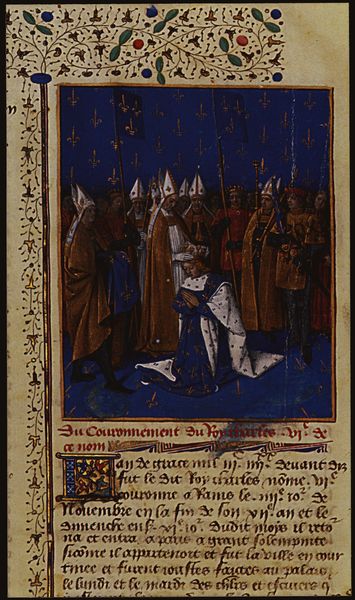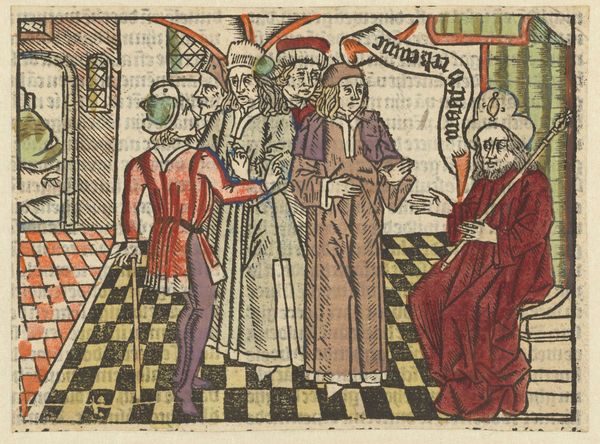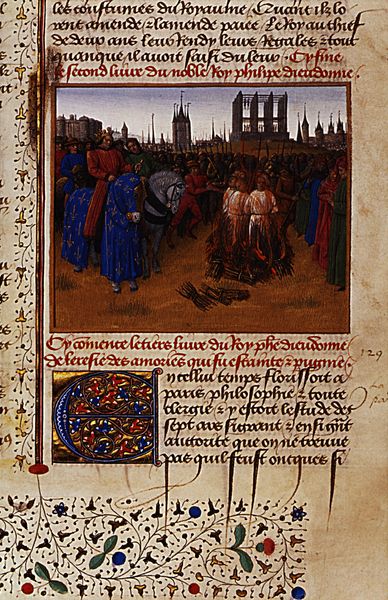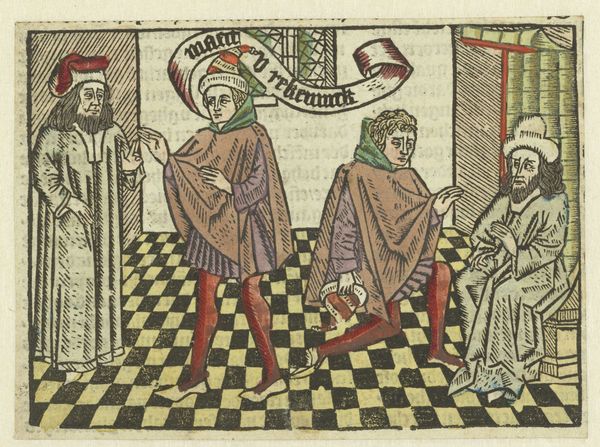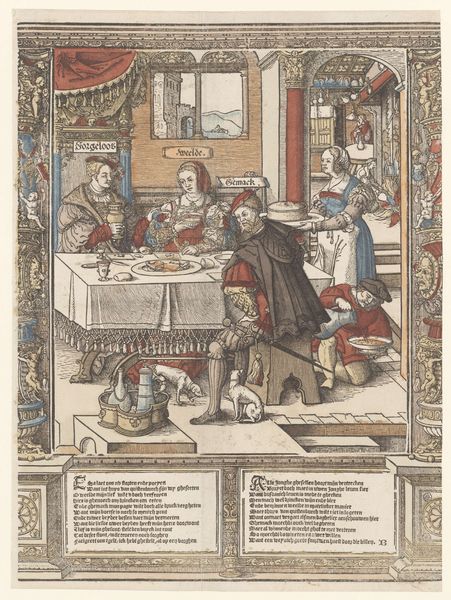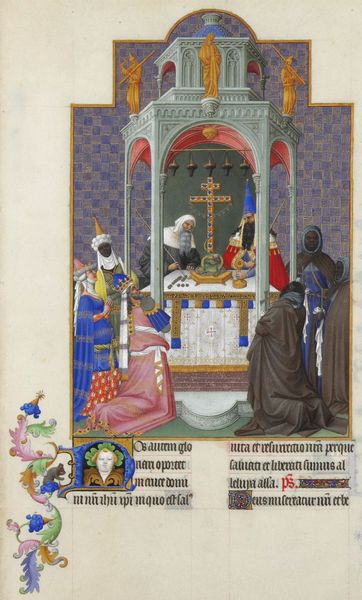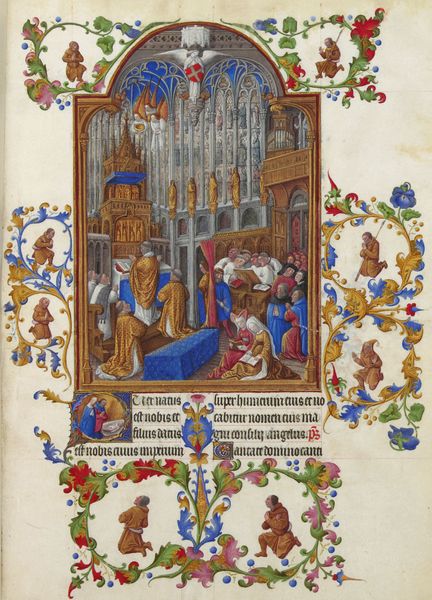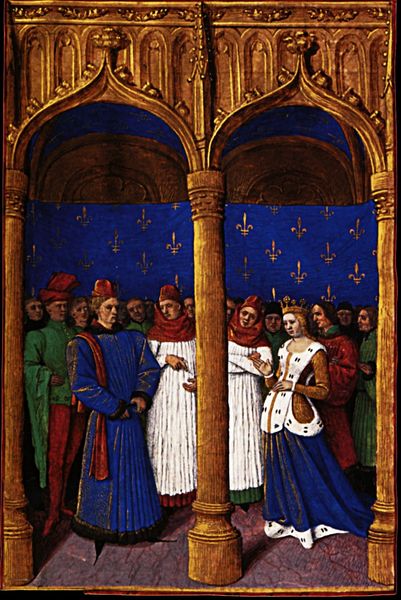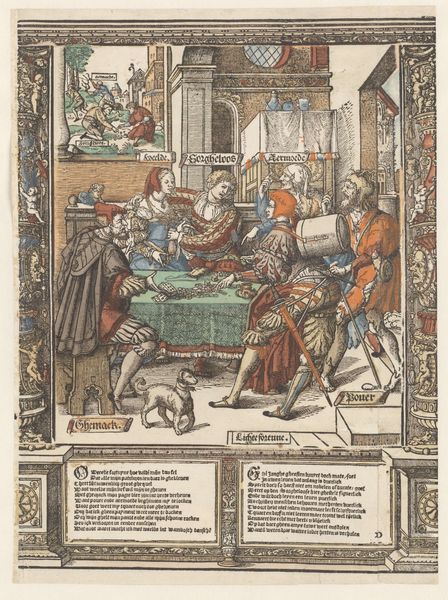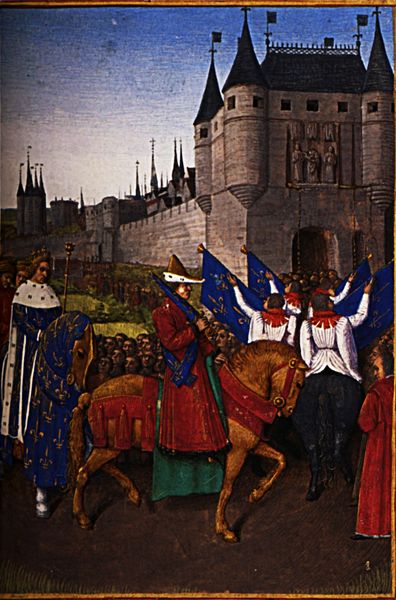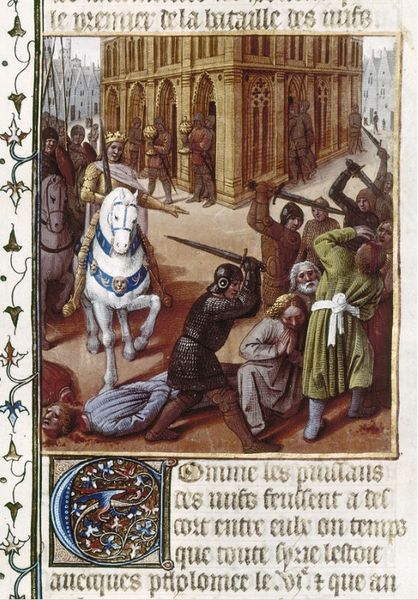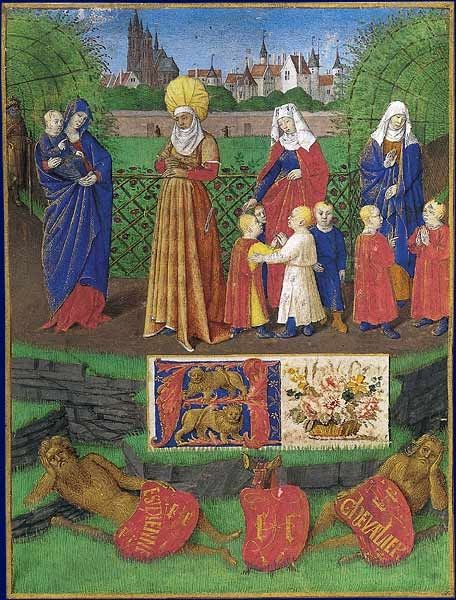
Banquet Given by Charles V (1338-80) in Hhonour of His Uncle Emperor Charles IV (1316-78) in 1378 1460
0:00
0:00
jeanfouquet
Bibliothèque nationale de France (BnF), Paris, France
tempera, painting
#
portrait
#
medieval
#
narrative-art
#
tempera
#
painting
#
figuration
#
history-painting
#
international-gothic
#
miniature
Dimensions: 46 x 35 cm
Copyright: Public domain
Editor: This tempera on vellum, "Banquet Given by Charles V in Honour of His Uncle Emperor Charles IV in 1378," by Jean Fouquet, dated 1460… It strikes me as an interesting blend of formality and narrative detail, with its carefully arranged figures and heraldic elements. How would you interpret its cultural significance, particularly regarding displays of power? Curator: Well, think about what a miniature like this would have been used for in the 15th century. It was likely part of a larger illuminated manuscript, possibly commissioned by someone connected to the French court. Such works played a significant role in constructing and communicating social and political ideals. The detailed depiction of the banquet serves to solidify the legitimacy and prestige of Charles V by showcasing the grandeur of his court and the presence of the Holy Roman Emperor as a guest. Editor: So it's not just about the literal event, but about projecting a certain image? Curator: Exactly. The choice of portraying a grand banquet with such specificity, including details like the fleur-de-lis on the royal blue cloth, communicates a deliberate message of power and lineage. Consider the historical context: France was solidifying its position on the European stage. Such displays, both in reality and in artistic representations, helped to cement this. How might the location of this work – in the Bibliothèque nationale de France today – further contribute to its ongoing historical narrative? Editor: That's a great point. Being housed in the National Library elevates its status, almost like an official record sanctioned by the state itself. Curator: Precisely. The art becomes intertwined with institutional power and national identity. This miniature, therefore, operates not just as a piece of art, but as a historical document actively shaped by the forces surrounding it. Editor: I never thought of it as such a calculated piece of propaganda! Curator: It reflects how art, particularly art tied to royalty and the state, is invariably caught in webs of power and influence, then and now. Editor: This really makes me appreciate the context in which art is created and displayed!
Comments
No comments
Be the first to comment and join the conversation on the ultimate creative platform.
